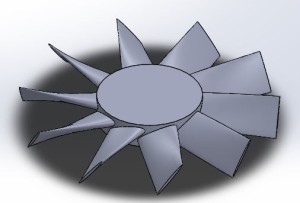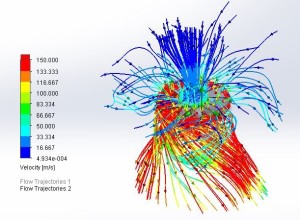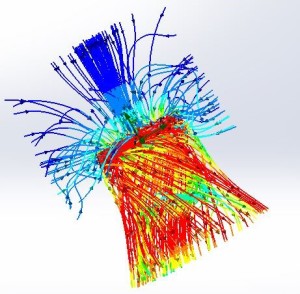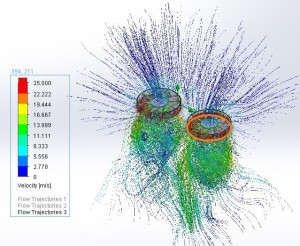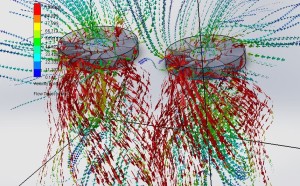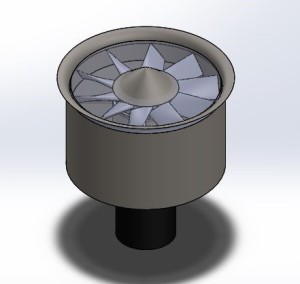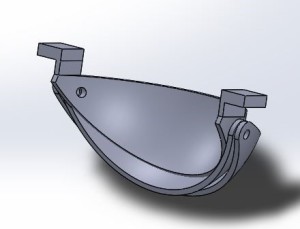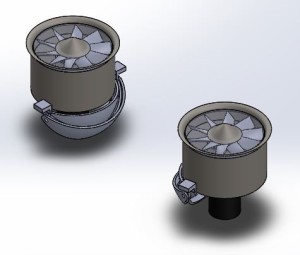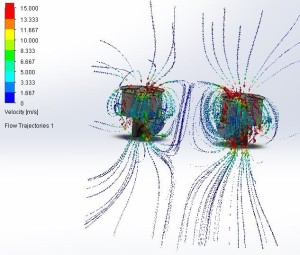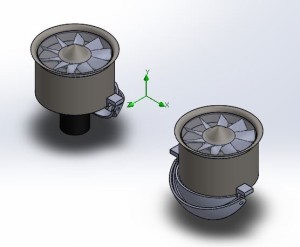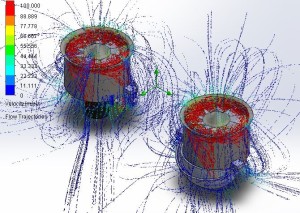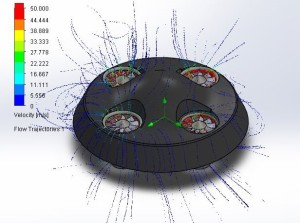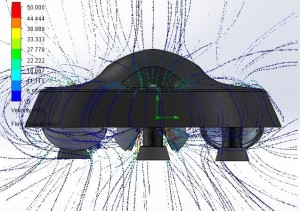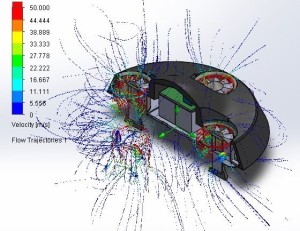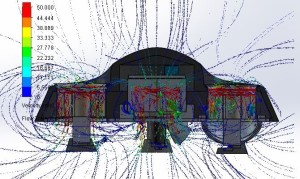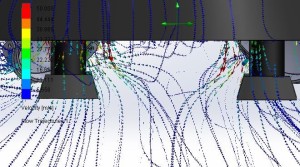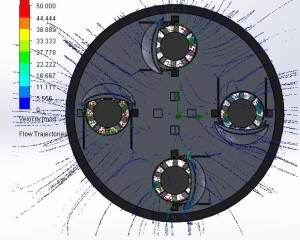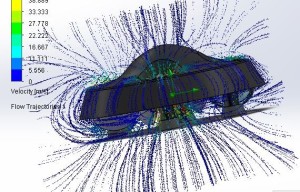Implementing the Air Ducts
By Juan Montano
Hello all, this study was made to determine if the air duct would be able to resolve our issue with having fans rotating in one direction.
First of all, we would like to see how our fan performs as of now. Below, you would see the fan blades that we currently have:
Now, we will use SolidWorks to determine the airflow:
As seen above, we have airflow going down, through the fan, and out as a vortex. The air flows like an upside down whirlwind, which would turn into a problem if there was another fan spinning the same direction. Let’s see what happens with two fans flowing the same direction:
We see some turbulence in between the two fans.
Here is another example:
Here we can see more clearly that there is airflow going upward instead of just straight down, which will be a problem.
Next we see how the airflow goes using the air duct and the fan assembly:
Our fan model and our air duct model. Put together we have:
Here is the airflow:
The airflow seems to be more stabilized now, however, we want to have some control over yaw, and therefore we reposition the air ducts like so:
We see that it will behave ok. Still see some concerns in between the two fans however, that would be manipulated to try to get yaw control. We redo the simulation using our SolidWorks model:
Here we see the UFO with some air flow. Here we note that the air curving back to the top of the bottom was due to the limited boundaries and high rotational speed of the fan. SolidWorks simulated these airflows inside a 3D box to decrease the amount of computation needed, therefore, we will pay no attention to those air flows.
Here we see the UFO closer and see how airflows near the UFO. We do see some air flow that behaves awkwardly, but mostly this system would let air flow downwards as we would like.
Below we show the UFO with more airflows:
Thus we can expect an easier time to control the UFO flight and possibly also yaw.

